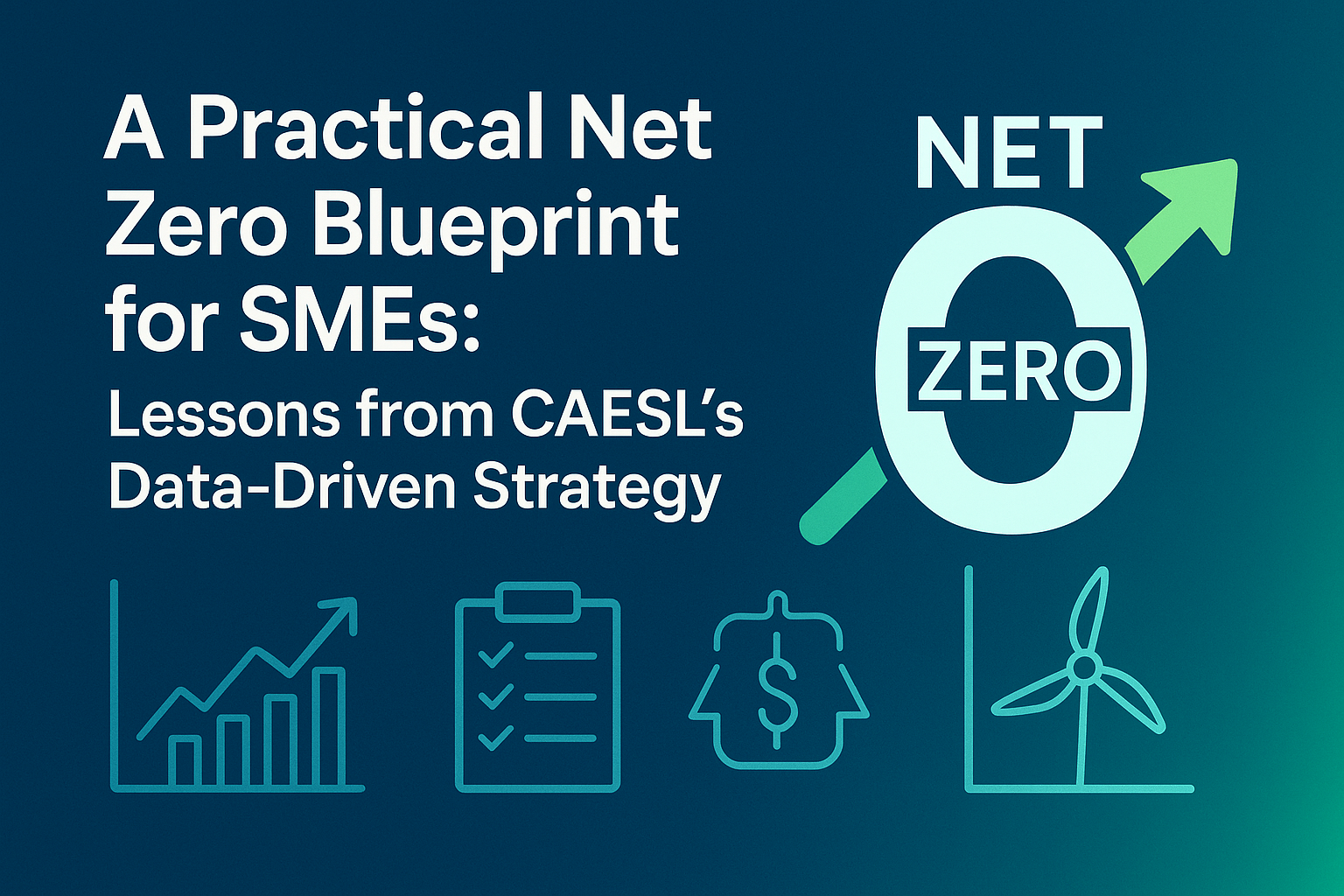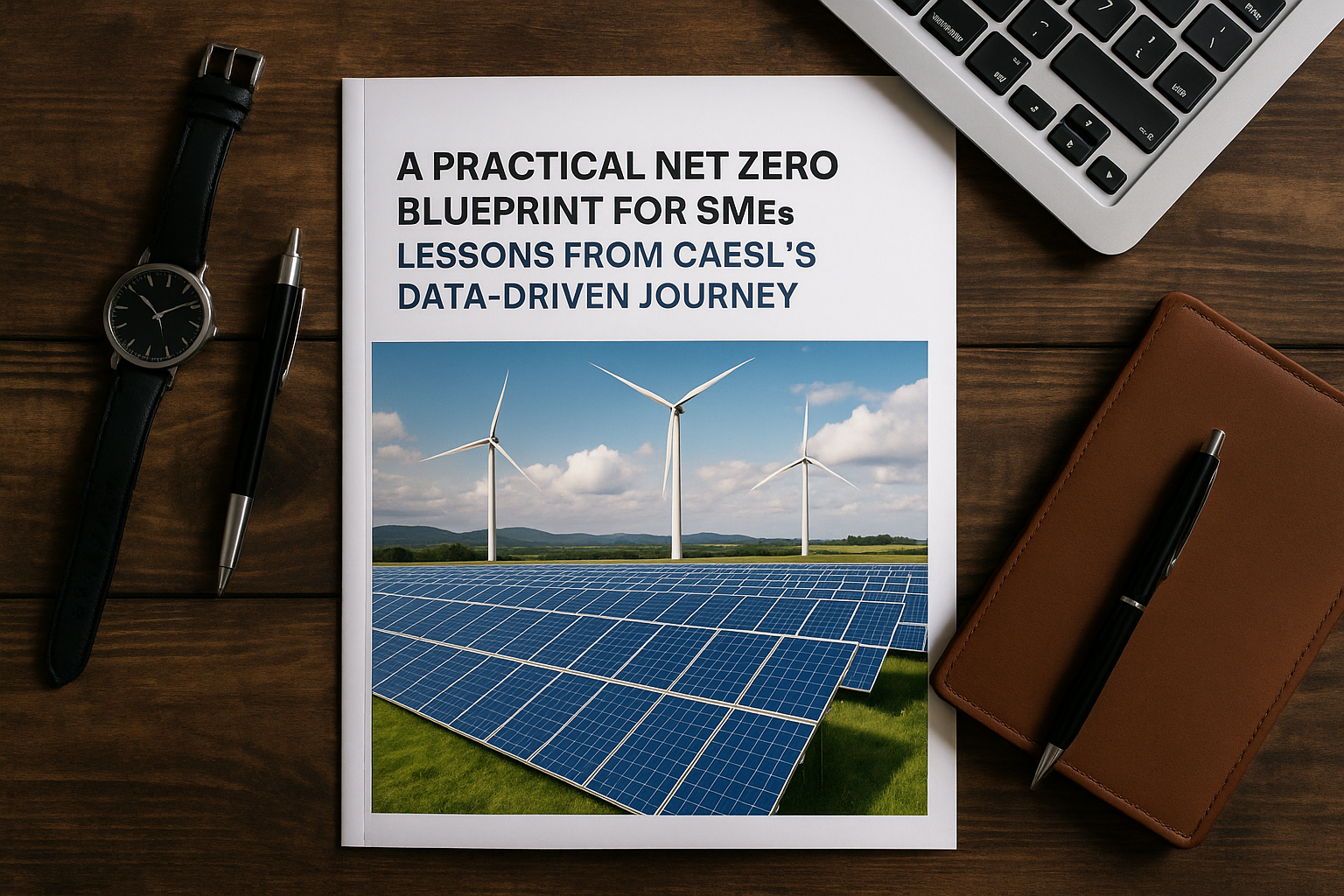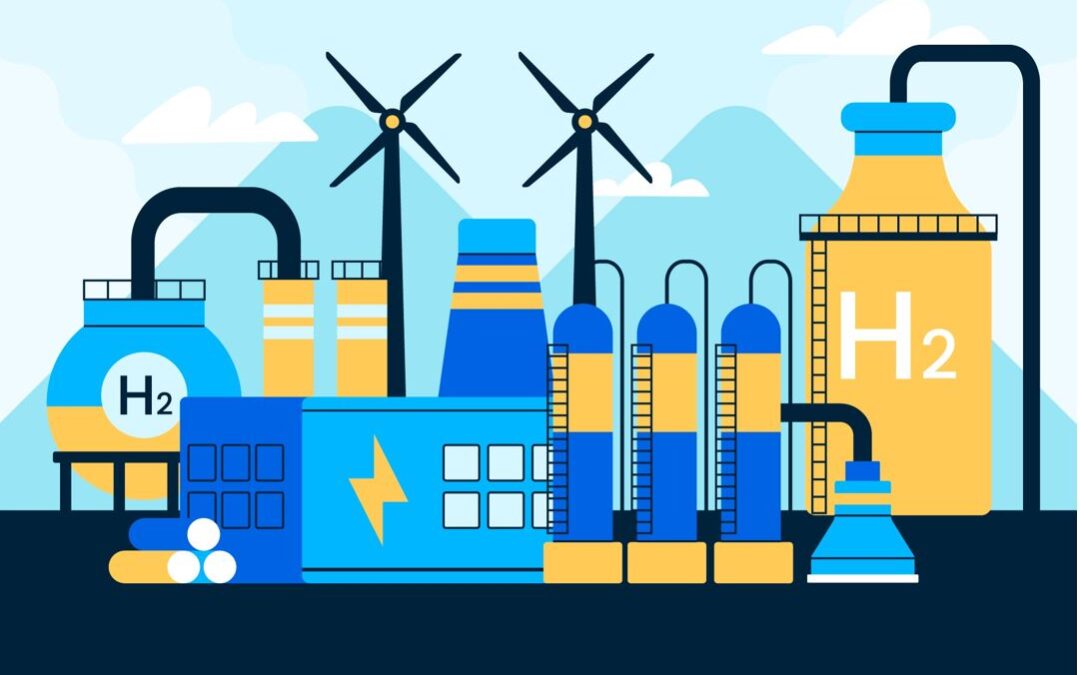For many small and medium-sized enterprises (SMEs), the path to net zero feels overwhelming — a maze of complex metrics, costly upgrades, and uncertain returns. Reaching net zero is becoming more urgent — not only because it is the right thing to do, but also because of growing legal, financial, and environmental pressures. For example, the UK Environment Act 2021 and the increasing focus on ESG (Environmental, Social, and Governance) standards are encouraging companies to take stronger action on climate change. In this context, the Net Zero strategy from Chamberlains Aqua & Energy Systems Limited (CAESL) offers a useful example of how SMEs can plan for decarbonisation in a structured, evidence-based way.
Studies have shown that if companies ignore their carbon emissions and wasteful energy use, it could cost them significantly in the long run. On the other hand, using tools that help track energy use and plan for emissions reductions can make a big difference. One helpful tool is DECO2, an open-source software that allows businesses to explore different paths toward net zero and identify which technologies are most suitable for their needs (Nair et al., 2023).

Understanding the Importance of Scope 1 and 2 First
CAESL’s net zero strategy begins by clearly defining what parts of the business are included. The organisational boundary focuses on its operations in Southampton, while the operational boundary looks at Scope 1 emissions (such as natural gas used on-site) and Scope 2 emissions (such as electricity). In their 2023 baseline, Scope 1 made up 84.6% of total emissions, which is comparable to other small UK companies that use fossil fuels, particularly natural gas for heating and infrastructure.
CAESL is not tackling everything at once. Instead, it plans to address Scope 3 emissions (such as those from suppliers, employee travel, and purchasing) by the end of 2025. This phased approach gives the company time to improve its data collection and gain experience in managing emissions in areas it can directly control first. Research supports this approach, showing that starting with Scope 1 and 2 helps businesses gain confidence before addressing the more complex elements of their carbon footprint (Keel & Thanekar, 2024).
From Metrics to Action: Scenario Planning for Net Zero
What makes CAESL’s strategy stand out is that it does not rely on a single plan; it employs scenario modelling to explore several possible pathways to reach net zero. The company developed three scenarios: a slower plan aiming for 2050, a more ambitious one targeting 2040, and a middle-ground plan set for 2045. The board decided to adopt the 2045 option, which represents a balanced choice between ambition and feasibility.
This methodology aligns with established best practices in the industry. It enables organisations to engage in strategic foresight and build resilience against technological and regulatory shifts.
Short-Term Targets: Actionable Climate Commitments
For the near term, CAESL has set a clear short-term action plan, focusing on two main targets: cutting its own emissions and helping clients start their Net Zero journey. Internally, the company will carry out energy efficiency checks, install smart meters, and improve system controls such as heating and air conditioning (HVAC). CAESL also aims to encourage employees to adopt greener commuting options or work remotely where possible, helping to reduce travel-related emissions.
From the technology side, CAESL is upgrading its digital tools to allow real-time tracking of energy use through Internet of Things (IoT) systems. For clients, CAESL will offer support through services such as EPC+ and TASHEX, which support organisations in modernising outdated infrastructure and moving toward lower-carbon solutions.
This dual strategy demonstrates how CAESL is not just focusing on its own carbon footprint but also enabling others to decarbonise — a concept often called carbon enablement. Research suggests that tools like AI-powered planning models and emissions tracking software are becoming essential for this kind of combined approach (Riemer et al., 2023).
Scope 3 and Supply Chain Decarbonisation: The Next Frontier
CAESL’s next big challenge is tackling Scope 3 emissions, which arise from activities such as waste management, transportation, and the full life cycle of the products and services it utilises. These emissions are more difficult to control because they occur outside the company’s direct operations, but they typically account for over 90% of a company’s total emissions across many industries (Thanawala, 2022).
That is why CAESL is planning to make its supply chain greener by working more closely with suppliers, selecting more sustainable materials, and analysing the environmental impact of products across their entire life cycle.
A Living Roadmap: Iteration, Innovation, and Intelligence
CAESL’s roadmap is not static. A five-year revision cycle is embedded to incorporate:
-
Emerging technologies (e.g. AI, carbon capture, digital twins);
-
Performance feedback from audits, comparing defined targets with real achievements;
-
Policy alignment with possible future regulations.
Final Words: Why CAESL’s Net Zero Pathway Is a Model for Replication
CAESL’s net zero strategy is a strong example of how an SME can approach climate action in a structured and practical way. A key to its effectiveness is the company’s deliberate phased approach, instead of attempting to take all actions at once. They begin with technical audits to understand the sources of emissions, and employ digital tools to track progress and make smarter decisions. Furthermore, by proactively engaging stakeholders, the company fosters organisation-wide buy-in and ensures the plan remains pragmatic and actionable.
Notably, CAESL does not just focus on reducing its own emissions. The company also works with clients and partners to help them reduce their emissions as well. This amplifies CAESL’s impact, enabling wider adoption of low-carbon solutions. Thus, CAESL is not only reducing its direct carbon footprint but also creating ripple effects that support broader decarbonisation.
Overall, CAESL’s roadmap demonstrates that with strategic planning, the right tools, and a collaborative approach, even smaller enterprises can play a meaningful role in addressing climate change. Their strategy is more than just a sustainability effort; it serves as an actionable blueprint and provides a tangible path for other businesses to follow.
References
Thanawala, Z. (2022). Supply-chain decarbonization: A crucial requirement to achieve Net-Zero. International Journal of Multidisciplinary Research and Growth Evaluation.
Riemer, M., Wachsmuth, J., et al. (2023). How do system-wide net-zero scenarios compare to sector model pathways for the EU? Energy Strategy Reviews.




